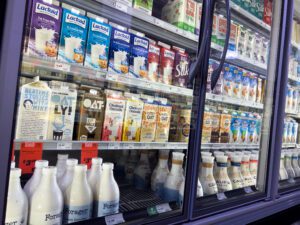
Hay fever, also known as allergic rhinitis, affects a large number of people. The condition is caused by an allergic response to indoor or outdoor airborne allergens, such as pollen, dust mites or pet dander. Learn more about hay fever and what are the new methods being used for its treatment.
Hay fever, also known as allergic rhinitis affects a large number of people of all ages. Hay fever sufferers may experience sneezing, congestion, a runny nose and sinus pressures. Since symptoms of hay fever are similar to the common cold, it becomes tough to diagnose hay fever.
Unlike the common cold which is caused by a virus, hay fever is caused by an allergic response to indoor or outdoor airborne allergens, such as pollen, dust mites or pet dander. The time of year you get hay fever depends on what airborne substance you are allergic to. Some people may also experience hay fever symptoms round the year.
While some people are only mildly affected by hay fever symptoms and are able to carry on with their lives, others may be severely hit. You might find it difficult to sleep, concentrate and are even unable to attend school or work.
Which types of pollen cause pollen allergy or hay fever?
Hay fever is also commonly known as pollen allergy. In fact, hay fever is actually a misnomer. As the name might suggest, hay fever does not mean that you are allergic to hay or have contracted a fever. In reality, hay is hardly ever an allergen and hay fever does not cause fevers.
Pollen allergy or hay fever is triggered by small, light, dry pollens shed by many trees, grasses and low-growing weeds as these are suited for dissemination by wind flow. The main cause of hay fever for most people is grass pollen. This is followed by pollens shed by trees such as alder, hazel, birch and horse chestnut. Pollens from weeds including plantains, mugwort and docks are a significant cause of hay fever in many people. You may be allergic to one, several or many types of pollen if you suffer from hay fever.
The best way to treat hay fever is to avoid the pollens that cause allergic reaction in your body. However, it may not always be possible to stay indoors. But it is indeed advisable to limit outings on days when pollen counts are high.
If you suffer from hay fever you can treat the condition by means of medications such as anti-histamines. The particular medicine is used because symptoms of pollen allergy occur due to the release of chemical called histamine in response to the allergen. For mild hay fever, anti-histamine medicines may be bought over the counter in the form of tablets, capsules, eye drops and nasal sprays. However, if you suffer from severe form of hay fever you should consult your doctor for more effective prescription medications.
To avoid addiction to medicine and to reduce the frequency of hay fever attacks, you can make use of drug-free alternative therapies such as Qu-Chi band. The band utilizes the Chinese knowledge of acupressure to work directly on the acupressure point that relieves the symptoms of hay fever. You may use Qu-Chi band to get relief from hay fever symptoms and reduce frequency of hay fever attacks. There are no side effects associated with the band. You can wear the band 24 hours a day, 365 days a year to prevent yourself from non-hay fever related allergic rhinitis, caused by house dust-mite or pets.


In recent years, seed milks have gained popularity as a nutritious and eco-friendly alternative to dairy and other plant-based milks. Marketed as a healthy option, these beverages are often touted for their rich nutrient profiles and sustainability. However, a closer look reveals that not all seed milks are created equal. Many contain hidden ingredients and […]


NOTICE TO THE PUBLIC! A vast array of products seen in American grocery stores are notably absent on European shelves. This is not due to a lack of international trade but rather stringent food safety regulations in the European Union. Many popular American foods are banned in Europe due to concerns about health risks and […]


Did you know that there lurks an invisible ingredient in meat that has been raising health concerns —It is called meat glue- scientifically known as transglutaminase? Transglutaminase is an enzyme used to bind pieces of meat together to create larger, more uniform cuts that creates a seamless appearance. According to the American Meat Institute, it […]